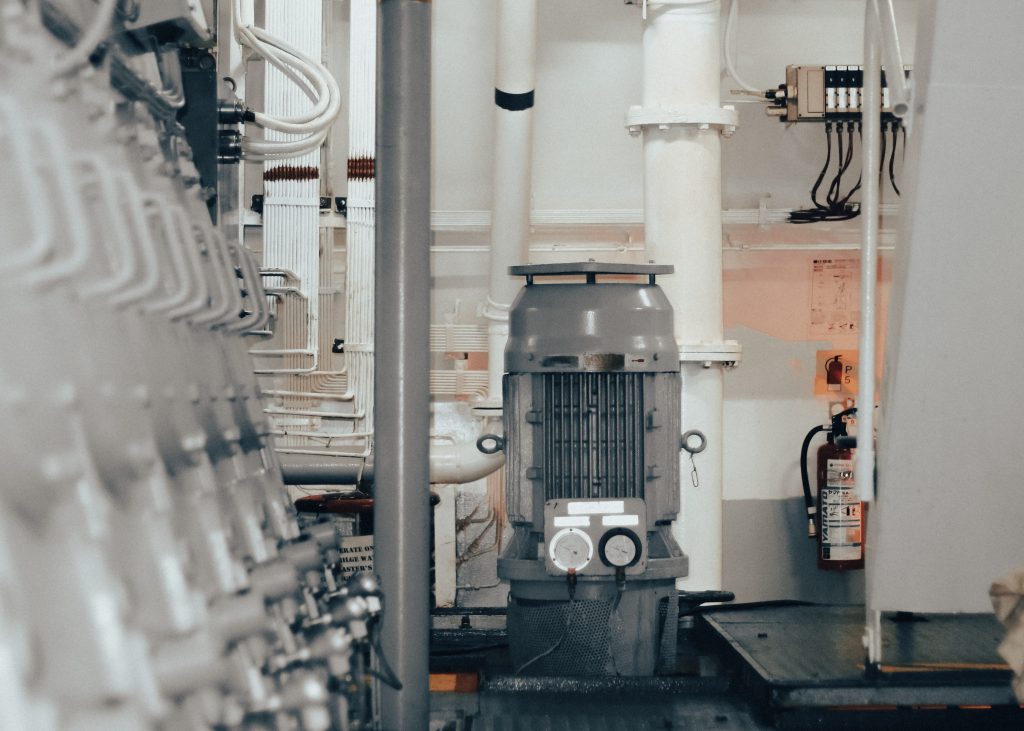
Centrifugal Pumps are a classification of dynamic pumps (pumps that have rotating parts such as impellers). Centrifugal pumps are used to induce flow or raise a liquid from a low level to a high level
Centrifugal pumps can further be divided into two types;
Vertical Centrifugal Pumps
As the name suggests, the shaft of this pump is planted vertically. It is designed in a manner where the shaft is overhanging and is radially split. These pumps are built to boost pipeline pressure, transfer chemicals and light hydrocarbons, lift sea water, etc.
Horizontal Centrifugal Pumps
The shaft of Horizontal pumps is oriented in a horizontal position set between bearings or overhung. The purpose behind these pumps is water circulation, which can be used in HVAC for heating, ventilation, and conditioning.
Difference Between Vertical & Horizontal Centrifugal Pumps
Space for Installation
Horizontal Centrifugal Pumps obligate more floor space for installation because of the shape of their shaft. In contrast, Vertical Centrifugal pumps demand less floor space but require a lot of headroom.
Pressure and Fluid Temperature
Vertical Centrifugal Pumps can bear an increased pressure and fluid temperature rate in contrast to Horizontal Centrifugal Pumps with a lower pressure and working temperature rate.
NPS
Net Positive Suction Head (NPSH); the variation between the inlet and lowest pressure level. Vertical pumps can alter NPSH as per condition, resulting in it appearing suitable for various applications. However, horizontal pumps function to work with the available NPSH as they cannot be altered and used by applications demanding a higher NPSH.
Competence/ Productivity
Horizontal Centrifugal Pumps tend to maintain a low percentage of failure and a high rate of efficiency in comparison to Vertical Centrifugal Pumps because their functioning is sensitive and likely to change in the viscosity of a fluid. This makes it appear relatively less efficient.
Installation
A pit and a barrel are required to install a large multistage vertical centrifugal pump, which could be a high cost for some. In this case, installing a horizontal pump is easier as it requires less space and can be installed indoors.
Maintenance
Vertical pumps work efficiently under high pressure and temperature conditions. They do not demand to prime, which as a result, saves an expense on maintenance. Horizontal Pumps, however, require priming from time to time, increasing the maintenance expenses at a later part.
Coupling Capability
Horizontal pumps have an anchored coupling capable of being used with accessories such as engines, turbines, or electric motors, while vertical pumps have a limited coupling capability; hence, they cannot be used with drivers such as turbines or engines.
Difference of Design
The overhung design of vertical pumps makes it troublesome to stabilize the axial thrust at high suction pressures. Horizontal Pumps, on the other side, can be categorized as having two shaft designs for applications requiring a low suction pressure “in-bearing” shaft design is suitable. Whereas, for applications demanding a high suction pressure, “overhang” shaft designs are more appropriate.
